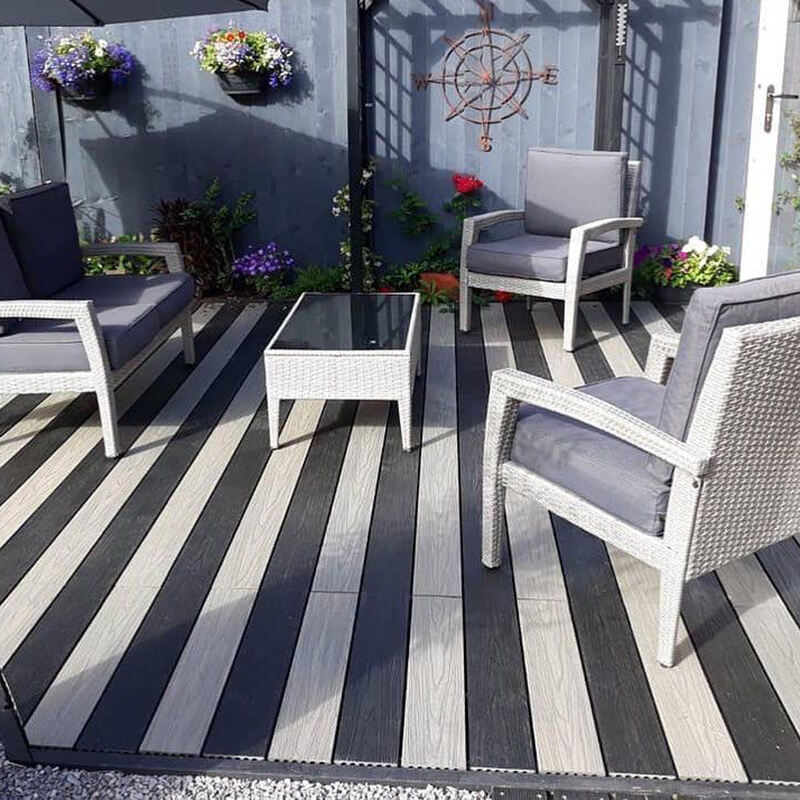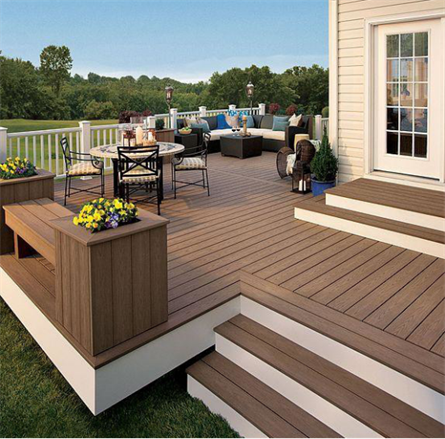Transforming Modern Landscapes with Advanced Materials
The landscape design industry is experiencing a revolutionary shift as composite materials reshape how we create and maintain outdoor spaces. These innovative materials blend natural aesthetics with cutting-edge technology, offering durability and versatility that traditional materials simply cannot match. From elegant decking solutions to sculptural elements that withstand the harshest weather conditions, composite materials in landscape design are opening new possibilities for creating sustainable, low-maintenance outdoor environments.
As environmental consciousness grows and property owners seek longer-lasting solutions, landscape architects and designers are increasingly turning to composite materials to fulfill both aesthetic and practical requirements. These materials represent the perfect marriage of form and function, providing the visual appeal of natural materials while offering superior performance characteristics.
Core Applications of Composite Materials in Contemporary Landscapes
Sustainable Decking and Pathways
One of the most prominent applications of composite materials in landscape design involves decking and pathway solutions. These elements form the backbone of any outdoor space, guiding movement and creating functional areas for entertainment and relaxation. Modern composite decking materials offer the warm, inviting appearance of natural wood while eliminating common problems like splintering, warping, and routine maintenance.
Advanced composite formulations now include enhanced slip resistance and UV protection, ensuring these materials maintain their appearance and safety features for decades. The ability to manufacture these materials in various textures and colors allows designers to create cohesive outdoor spaces that complement both traditional and contemporary architectural styles.
Architectural Features and Structural Elements
Composite materials are revolutionizing the creation of architectural features in landscape design. From pergolas and gazebos to privacy screens and boundary walls, these materials offer structural integrity while maintaining a sophisticated appearance. The inherent strength-to-weight ratio of composites makes them ideal for creating bold, sculptural elements that would be impractical or impossible with traditional materials.
Designers are particularly drawn to the ability to mold composite materials into complex shapes and forms, enabling the creation of unique focal points and statement pieces within landscape designs. These materials can seamlessly integrate lighting elements and other technological features, expanding the functionality of outdoor spaces.
Environmental Benefits and Sustainability Factors
Reduced Environmental Impact
The integration of composite materials in landscape design significantly contributes to environmental sustainability. Many modern composites incorporate recycled materials, reducing waste and minimizing the demand for virgin resources. The extended lifespan of these materials means less frequent replacement and reduced resource consumption over time.
Furthermore, the manufacturing processes for landscape-grade composites have become increasingly efficient, with many manufacturers implementing closed-loop systems that minimize waste and energy consumption. This commitment to sustainability extends throughout the product lifecycle, from production to eventual recycling.
Water Conservation and Management
Composite materials play a crucial role in water-conscious landscape design. These materials can be engineered to assist in water management through permeable surfaces and integrated drainage systems. Advanced composites used in retaining walls and water features help prevent water loss and maintain structural integrity without the degradation common to traditional materials.
The non-porous nature of many composite materials also means they require minimal water for maintenance, contributing to overall water conservation efforts in landscape management. This characteristic is particularly valuable in arid regions or areas with water usage restrictions.
Design Flexibility and Aesthetic Innovation
Color Integration and Visual Appeal
The aesthetic versatility of composite materials in landscape design offers unprecedented creative freedom. Unlike natural materials, composites can be manufactured in virtually any color, allowing for perfect coordination with existing architectural elements or the creation of bold contrast in design schemes. The color is integral to the material, ensuring long-lasting appearance without the need for painting or staining.
Advanced manufacturing techniques allow for the creation of materials that convincingly mimic natural textures while offering superior performance characteristics. This enables designers to achieve the desired aesthetic without compromising on durability or maintenance requirements.
Texture and Pattern Options
Modern composite materials offer an extensive range of texture options, from smooth contemporary finishes to deeply embossed patterns that replicate natural materials. This versatility allows designers to create multi-sensory experiences in outdoor spaces, combining visual and tactile elements to enhance user engagement.
The ability to incorporate multiple textures and patterns within the same material system enables the creation of defined zones and transitions within a landscape design, all while maintaining material consistency and performance standards.

Maintenance and Longevity Considerations
Weather Resistance and Durability
One of the most compelling advantages of using composite materials in landscape design is their exceptional weather resistance. These materials are engineered to withstand extreme temperatures, heavy rainfall, UV exposure, and freeze-thaw cycles without degradation. This durability translates to reduced maintenance requirements and longer service life compared to traditional materials.
The stability of composite materials means they maintain their dimensional integrity regardless of weather conditions, preventing common issues like warping, cracking, or splitting that often plague natural materials in outdoor applications.
Long-term Cost Benefits
While the initial investment in composite materials may be higher than traditional alternatives, the long-term cost benefits are substantial. The elimination of routine maintenance tasks such as painting, sealing, or replacing damaged components results in significant savings over the lifetime of the installation. Additionally, the extended lifespan of composite materials means fewer replacement cycles and reduced labor costs.
Property owners increasingly recognize the value proposition of composite materials, understanding that the upfront cost is offset by reduced maintenance expenses and enhanced durability.
Frequently Asked Questions
How long do composite materials typically last in landscape applications?
High-quality composite materials used in landscape design typically last 25-30 years or more with proper installation and minimal maintenance. Many manufacturers offer warranties ranging from 20 to 50 years, depending on the specific product and application.
Are composite materials eco-friendly options for landscape design?
Modern composite materials often contain high percentages of recycled content and are themselves recyclable at the end of their service life. Their durability and low maintenance requirements also contribute to environmental sustainability by reducing the need for replacement and minimizing resource consumption over time.
How do composite materials compare in cost to traditional landscape materials?
While composite materials generally have a higher upfront cost compared to traditional options, they often prove more economical over their lifetime due to reduced maintenance requirements, longer service life, and fewer replacement needs. The total cost of ownership, including installation, maintenance, and replacement, typically favors composite materials in the long term.

